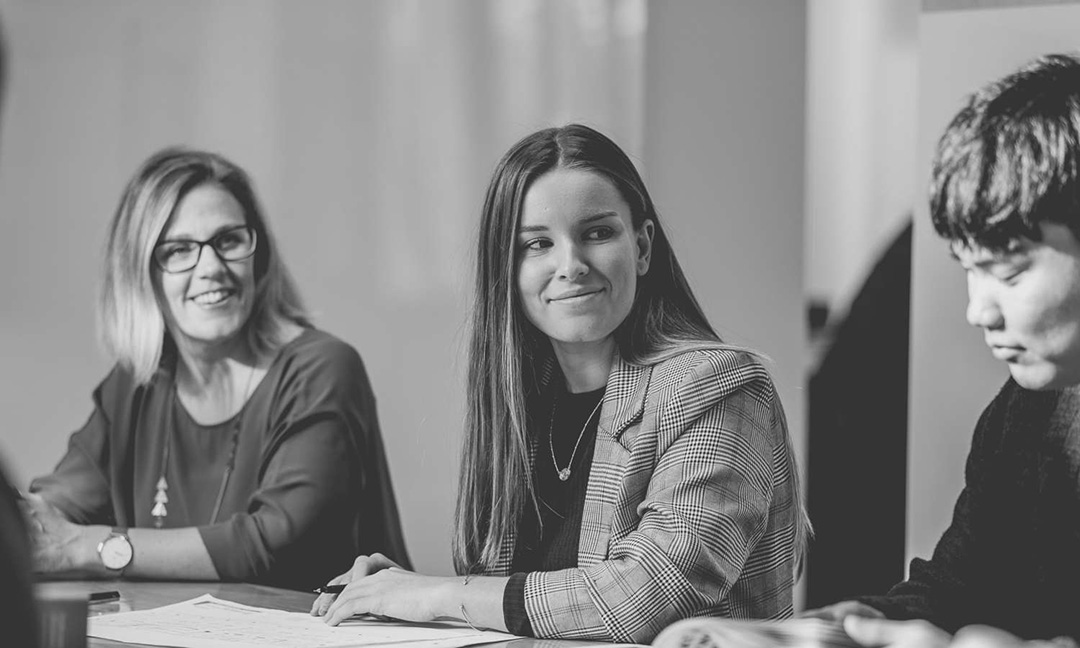-
New Zealand
Copyright © 2025 Powered by BCI Media Group Pty Ltd
Confirm Submission
Are you sure want to adding all Products to your Library?
Contact Detail

Whether fashion, furniture or a fitout that balances form and function, the design process is a fusion of past, present and future inspiration. Georgia Simpson, of GHDWoodhead creativespaces, designed the new Bunnings Head Office space, which is a finalist in the prestigious Best Design Awards. We talk to Georgia about shoes, early mornings and the influences that instruct her work.
What did you want to be when you ‘grew up’?
I still have some growing to do but I always wanted to be a fashion designer or stylist. I used to sleep with my new shoes beside me because I couldn’t wear them to bed.
What is your earliest design memory?
Art Classes in primary school. I created a six series masterpiece inspired by my limbs that my parents still have hanging proudly on their wall.
What do you see as the optimal relationship between a designer and furniture company?
Trust, reliability and good communication are always crucial. We rely so heavily on our wonderful suppliers to make our designs into reality and with increased demand and short time frames it’s so important that we can collaborate fluidly on ideas to come out with the optimum outcome for the client.
Who/what inspires your work?
Surrounding myself with a team that pushes me to do more and raise my bar is so important in keeping me inspired. I also spend a lot of time online looking at global ideas and creativity. I like to look at what we are not doing yet and focus on what’s not been done. Work that comes out of San Francisco is always a good read.
What does the creative process look like for you?
My mind is constantly in thinking mode and most of the time I think out loud to my lovely colleagues. I like noise and collaboration – it helps to challenge any idea. In the case of a creative block I normally need a change in environment and to be in my own space but I always have been a morning person, there’s something so inspiring about a new day.
What is the most rewarding project you have worked on? The most challenging?
Bunnings has been an extremely rewarding project for us recently. All our projects are rewarding in their own right but there’s something so rewarding when our client really appreciates what we do for them and loves their new space as much as Bunnings does.
I have also been involved in the New Zealand Blood redevelopment in the last year and that has had its fair share of challenges but has also been a great project for growth as there is such a vast scope and range of specialities.
Where do you see commercial interior design heading in the future?
Spaces where people can move even more freely than they do now. As well as company initiatives for work-life balance and the ideas of onsite ‘campus’ living being more prominent. People aren’t designed to sit in one place for 8 hours and hopefully we will see even more of a residential/industrial aesthetic in commercial design.
What impact is an increasing focus on sustainability having on design processes and outcomes?
A huge impact. We really need to start implementing sustainable processes as standard practice rather than an added luxury.
Functionality or aestheticism?
Both, because it is always possible.
How does any given industry inform the materials used?
Hugely for us. At GHDWoodhead creativespaces I have really learnt the art of giving our client an environment that completely exemplifies them as a company, a space they feel at home in. We use a lot of materiality and ideas that link back to the company’s values, branding and history. In being inspired by each client and their story each fitout tells its own story and that is so important to us and the success we see in what we do.What are your favourite materials and/or colours to work with?
Anything that brings a textural richness to the working environment with a certain amount of raw natural elements to balance things out. I like to be bold and take risks – why make life boring if it doesn’t need to be?






Save Company
Add All Products to My Library
Send Meeting Request to this Supplier